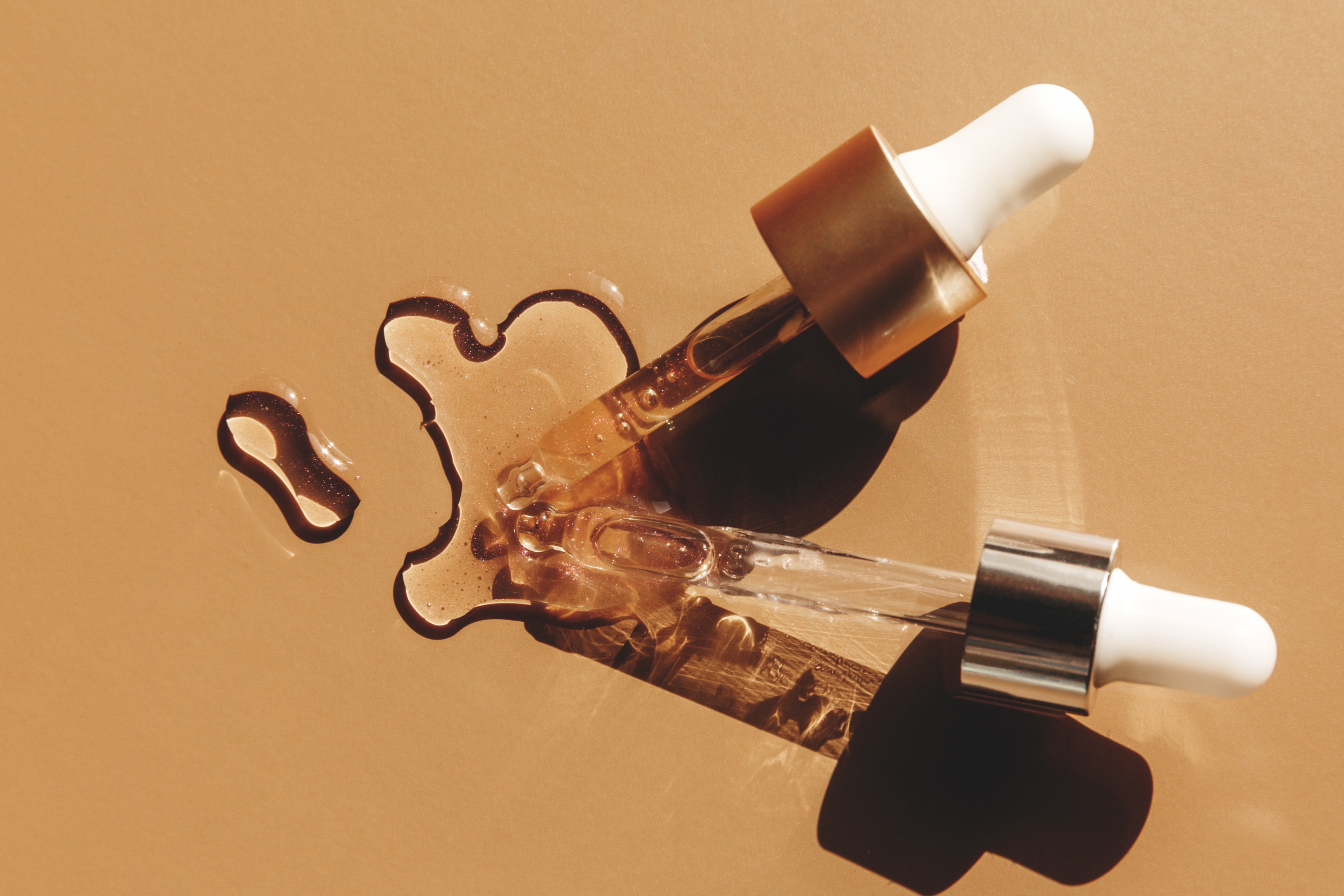Hyaluronic acid vs glycolic acid: what’s the difference between these two ingredients?
Not sure whether to use hyaluronic acid or glycolic acid for brighter, healthier skin? We’ve got you covered

Don’t let the names fool you—when it comes to hyaluronic acid vs glycolic acid, these skincare ingredients aren’t exactly part of the same family.
It's no secret that using one of the best hyaluronic acid serums will inject much-needed hydration into your skin. Hyaluronic acid is a type of sugar that’s found in the skin, whereas glycolic acid is a real-deal acid derived from plants. But the two can work wonders together to help you achieve healthier and more radiant skin.
“When used together, these two naturally occurring ingredients can help retain moisture, reduce redness, and keep skin healthy and bright,” explains Dr. Monica Michel, founder of Canadian medical aesthetics practice SOMA MD.
If you’re looking to brush up on your skincare vocabulary—and use the best hyaluronic acid and glycolic acids in the right order—here’s what you need to know.
Hyaluronic acid: the hydrator
Hyaluronic acid gels, serums, and masks are great for keeping your skin soft and hydrated. The polysaccharide ingredient acts as a humectant that locks in water to help your complexion look healthier and feel smoother.
“Hyaluronic acid’s primary function is to keep and retain water and moisture,” says Dr Michel. “When used in skincare, this means a brighter complexion, a more plump appearance, and healthy, moisturized skin.”
So, if you’re dealing with dry skin or simply want to retain that naturally dewy glow, reach for hyaluronic acid.

Glycolic acid: the exfoliator
“Glycolic acid is highly effective for rejuvenating the skin,” says Dr Goldman, cosmetic surgeon in Perth, Australia. “While hyaluronic acid helps in hydrating your skin, glycolic acid exfoliates dead skin cells,” he explains.
It’s one of the safest alpha-hydroxy acids (AHAs) you’ll find in skincare products—meaning, unlike hyaluronic acid, glycolic acid actually is an acid.
And how does it work? Well, if there’s one thing we know about acids, it’s that they’re great at dissolving things. Skincare products containing glycolic acid do just that—they work by breaking down dead skin cells and other substances, freeing them from the surface of your skin to reveal the brighter and smoother skin underneath.
Kristin Gunn, licensed medical aesthetician at Beaux MedSpa, in Texas, says that, given its exfoliating properties, it can be “a beautiful addition to your skincare routine and is a must starting in your thirties—when your skin’s natural exfoliating (sloughing off) slows down.”
If you don’t shed those layers of dead skin cells—either through natural sloughing off or exfoliation — you’re left with duller, drier-looking skin, says Kristin. This is where glycolic acid comes in, to help you reveal a more radiant complexion underneath.
If you struggle with acne, your dermatologist might recommend exfoliating with glycolic acid. Since it removes dead skin cells, it can prevent the pore blockage that leads to breakouts.

- Hyaluronic acid benefits: Soak up the knowledge you need for hydrated skin
- Is using too much hyaluronic acid bad for skin?
- Hyaluronic acid vs retinol: What's the difference between these two skincare hero ingredients
- Is hyaluronic acid good for acne? Here's what we know
How to use both glycolic acid and hyaluronic acid
Comparing hyaluronic acid vs glycolic acid, there’s no competition between them. In fact, these ingredients can complement each other nicely.
Think of glycolic acid as your exfoliator. Look for a cleanser, mask, or peel with this ingredient to kick dead skin cells to the curb. If you have sensitive skin, keep in mind that products containing glycolic acid may cause irritation. Start with a patch test to see how your skin responds.
After exfoliating, follow up with hyaluronic acid as your moisturizer. Gels, serums, and masks containing hyaluronic acid are all solid choices.
Working in that order is essential. Exfoliate with glycolic acid first, rinse off your face with water, then apply hyaluronic acid to your still-damp complexion. As Dr Michel explains, “It’s super important to moisturize after applying glycolic acid to help retain moisture and not over-strip your skin.”
You don’t necessarily need to use a hyaluronic acid moisturizer though—other options like ceramide creams can do the trick. The key here is to lock in the skin’s hydration after exfoliating, to ensure you don’t leave your face feeling dry and a little raw.
But with these two power ingredients in your line-up, you’ll swap dry patches and dullness for skin that’s more supple, radiant, and youthful. If you want to maintain a fresh face today and prioritize anti-aging for the future, hyaluronic acid and glycolic acid may be your go-tos.
So, if you’re about to flip a coin to choose between the hyaluronic gel and glycolic peel in your shopping cart, go ahead and grab both.
My Imperfect Life thanks Dr Monica Michel of SOMA MD, Dr Goldman of Dr Robert Goldman—cosmetic surgeon, and Kristin Gunn of Beaux MedSpa for their time and expertise.
The My Imperfect Life team is all about helping you navigate your world. We bring you the latest on fashion, beauty, travel and wellness so you can live life on your terms.